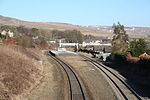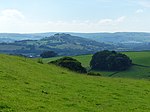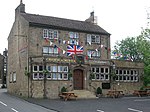Chinley
High Peak, DerbyshireTowns and villages of the Peak DistrictUse British English from June 2016Vague or ambiguous time from April 2019Villages in Derbyshire

Chinley is a rural village in the High Peak Borough of Derbyshire, England, with a population of 2,796 at the 2011 Census. Most of the civil parish (called Chinley, Buxworth and Brownside) is within the Peak District National Park. Historically, before the coming of the railway, the area was economically dominated by agriculture. Nowadays most inhabitants commute out of the village to work; accessible centres of work include Stockport, Sheffield and Manchester.
Excerpt from the Wikipedia article Chinley (License: CC BY-SA 3.0, Authors, Images).Chinley
Derwent Square, High Peak Chinley, Buxworth and Brownside
Geographical coordinates (GPS) Address Nearby Places Show on map
Geographical coordinates (GPS)
| Latitude | Longitude |
|---|---|
| N 53.339 ° | E -1.941 ° |
Address
Derwent Square
Derwent Square
SK23 6BH High Peak, Chinley, Buxworth and Brownside
England, United Kingdom
Open on Google Maps











